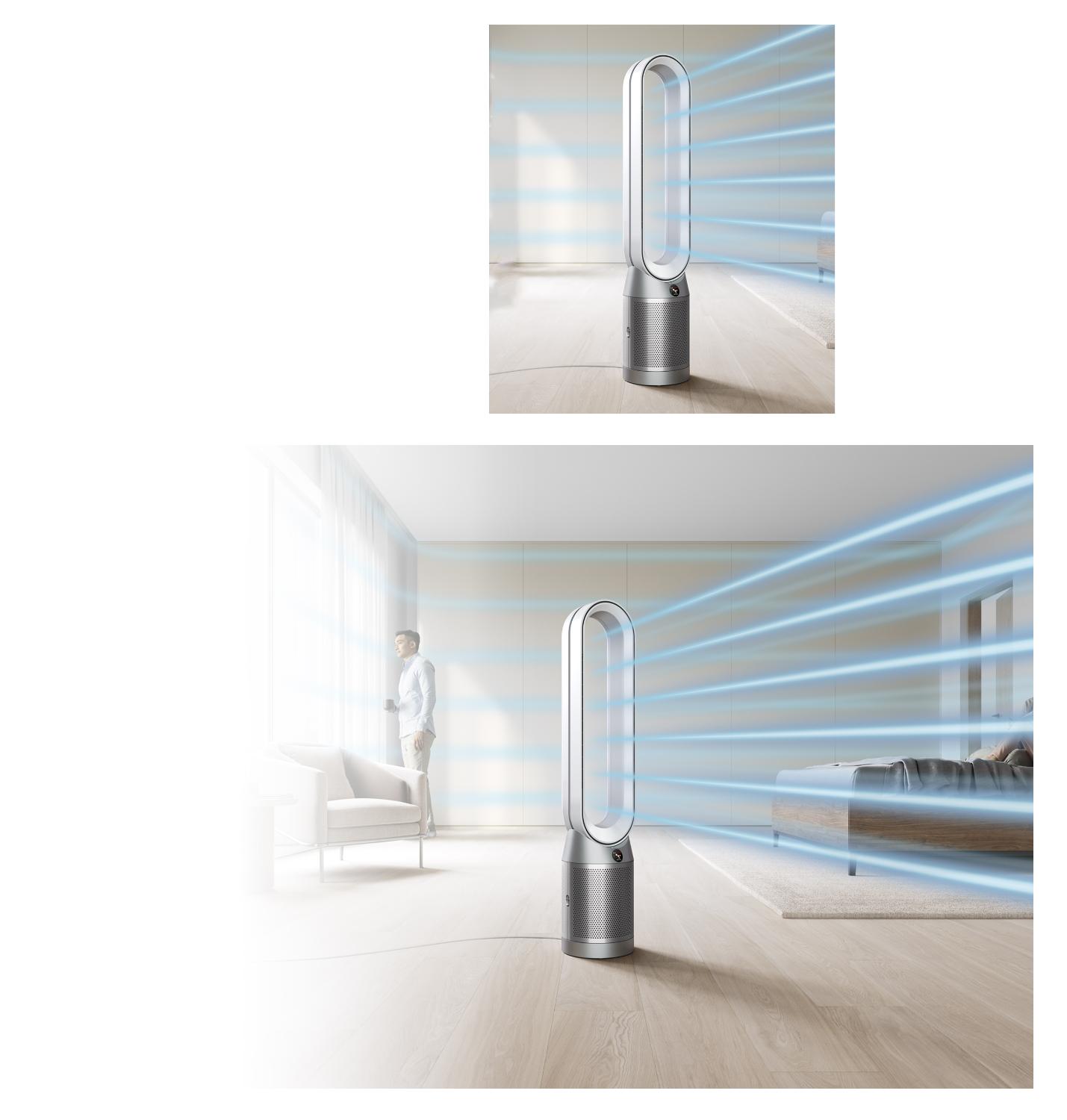
Automatically senses, captures, and traps pollutants
Fully sealed to HEPA H13 standard.³ So what goes inside, stays inside.
Purifies the whole room² and cools you

Powerful circulation to purify the whole room
Only Dyson purifiers have Air Multiplier™ technology, to draw in distant pollutants and project purified air throughout the room.²

Dyson purifiers are tested beyond the industry standard
We test our purifiers in a room size of 81m³, with nine sensors that continuously measure air quality. Some other manufacturers use a small 28.5m³ chamber, with only one sensor and a fan to boost circulation.
-

Industry-standard test chamber – only 28.5m³
-

Dyson POLAR test chamber - 81m³
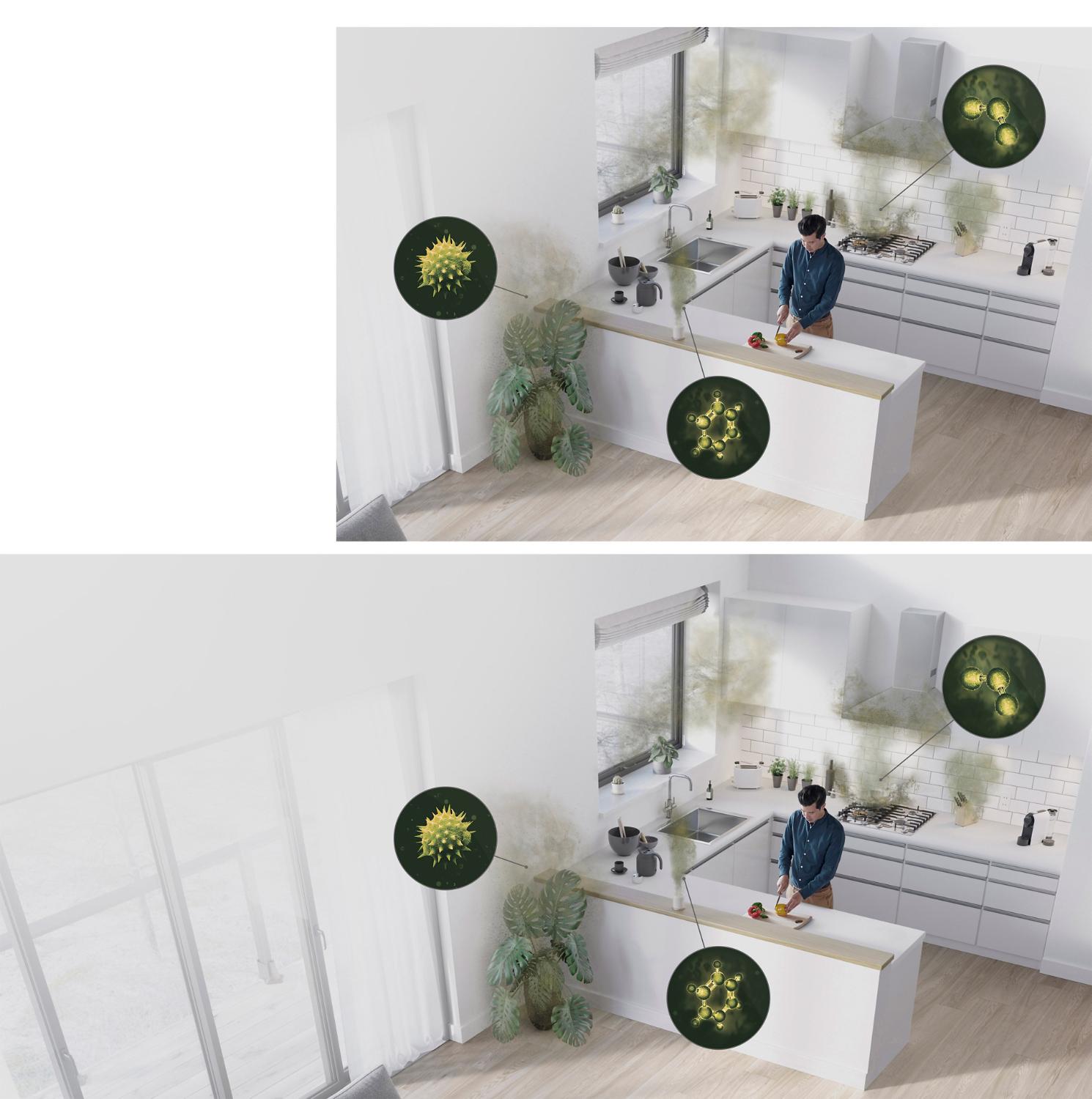
Poor air quality isn't just a problem outside. It's a problem inside too.
From plant pollen and cooking fumes, to VOCs and benzene found in sprays and candles, our homes can trap pollutants in the air. That's why Dyson purifiers automatically sense and remove them.
-
Common allergens - pet dander, pollen and dust
PM10
-
Industrial emissions and smoke
PM2.5
-
Ultrafine particles
PM0.1
-
Odors
Household fumes and cooking
-
Benzene and VOCs
Cleaning products and candles
-
Nitrogen dioxide
Gas stoves and car exhausts
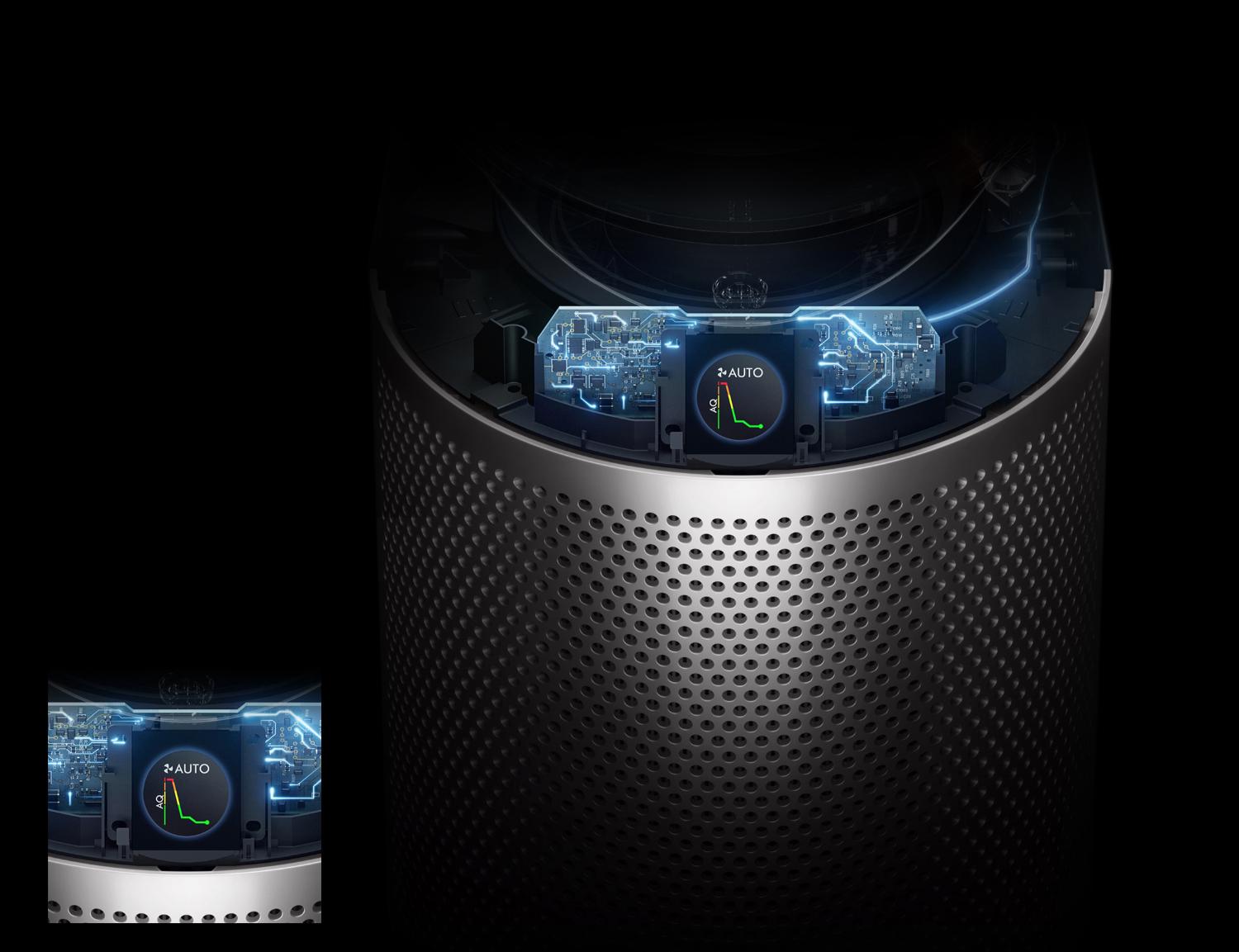
Senses and reports, automatically
Three sensors constantly analyse your air, while our unique algorithm cross-checks data every second. To precisely monitor, display and react to your air quality.
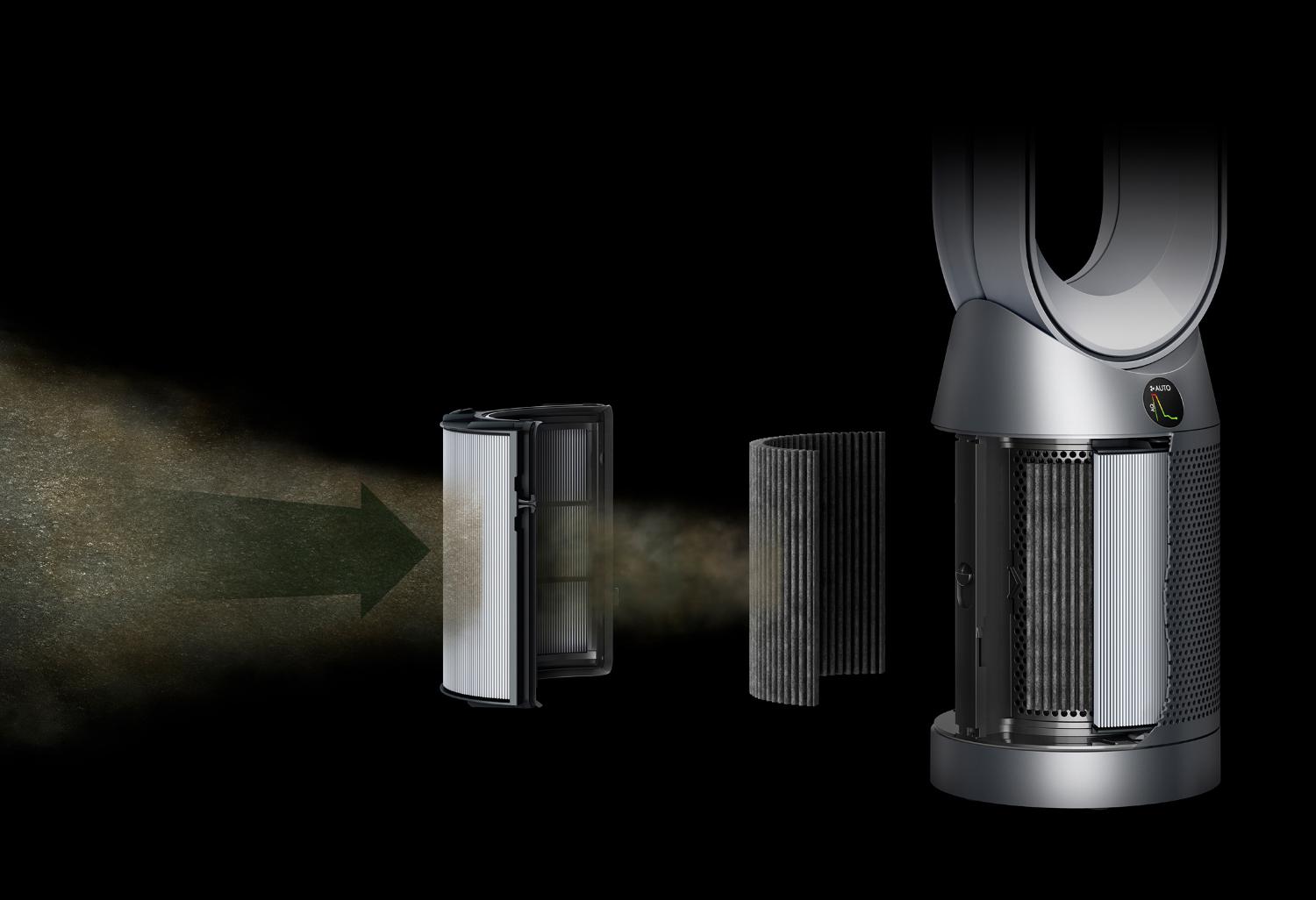
Captures pollutants with advanced HEPA filtration.
A HEPA filter captures 99.97% of particles 0.3 microns in size and a filter removes gases and odors.
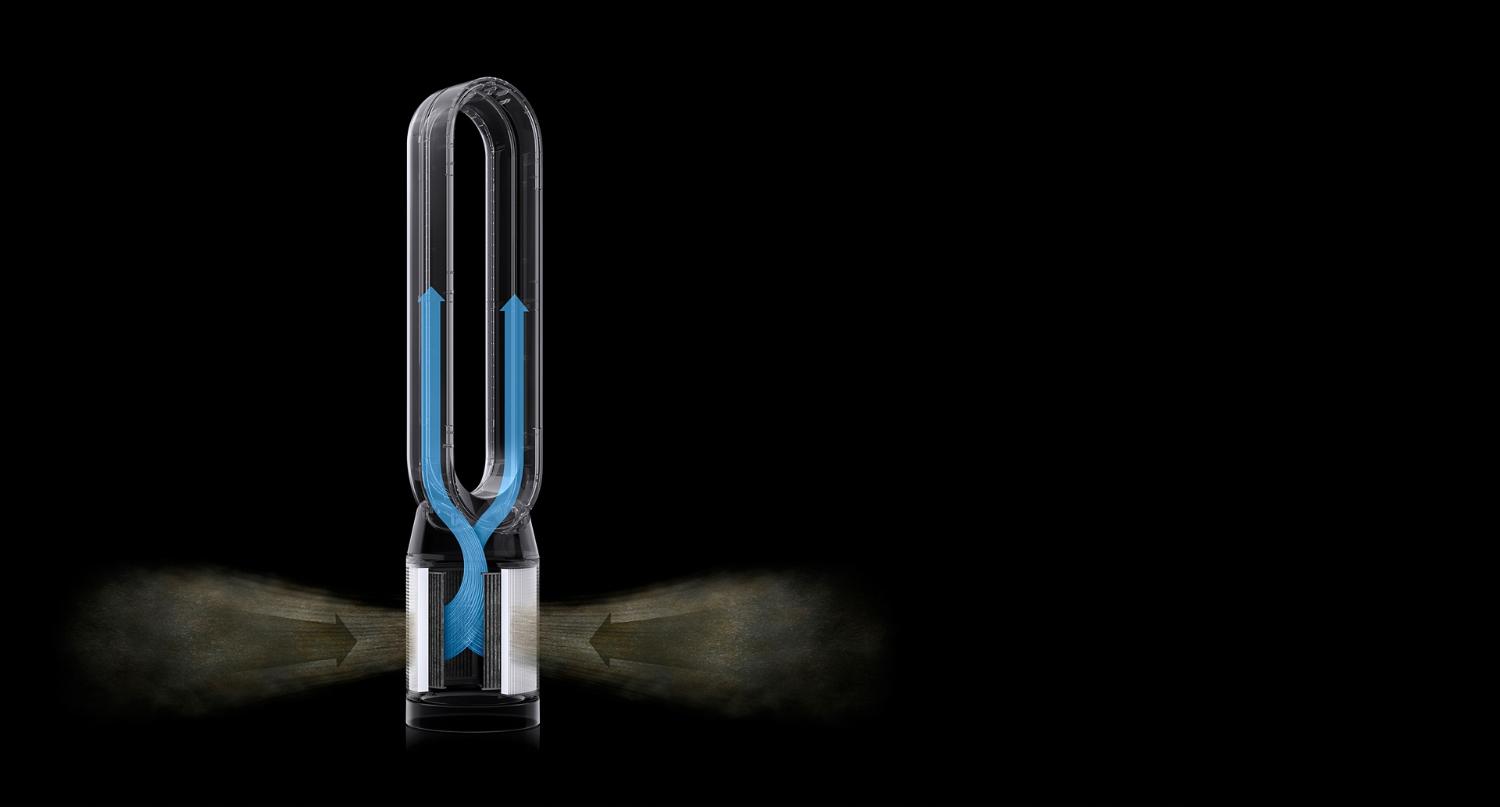
Fully-sealed to HEPA H13 standard
To prevent pollutants leaking back into the air, it's not just the filter that's sealed to HEPA H13 standard, it's the whole purifier.³ So what goes inside, stays inside.
Additional features
-

Backward airflow mode. Purifies without cooling you.
Airflow is diverted through the back of the machine, maintaining effective purification.
-

Night mode
For lighter sleepers, it monitors and purifies using the quietest settings along with a dimmed display.
-

20% quieter
Acoustically engineered to reduce turbulence, so it's 20% quieter than the previous model.
-

Easy filter care
Your HEPA+Carbon filter is easy to change and the LCD screen will alert you when it's time.
Featured air treatment articles
Frequently asked questions
Dyson engineers are perfectionists. Channelling our relentless dissatisfaction, we have re-engineered the Dyson Purifier range to be our first purifiers fully sealed to HEPA H13 standard. Capturing 99.95% of ultrafine particles and preventing pollutants from leaking back into the air you breathe.
The Dyson Purifier Cool Formaldehyde has all of the capabilities found in our advanced purification products but goes a step further to detect and destroy formaldehyde. An added solid state-sensor precisely detects formaldehyde, while our catalytic filter breaks it down into two safer molecules – carbon dioxide and water.
Formaldehyde is a polluting gas formed of carbon, hydrogen and oxygen that is commonly found in homes. Common sources of formaldehyde in your home could be: paint and varnishes, air fresheners, mattresses, furniture, household cleaners, carpets, particleboard and plywood, electronics, dryer sheets, nail polish remover, moth balls, toys, fireplaces and wood burning stoves.
We recommend replacing the HEPA+Carbon filter every 12 months. That's because over time, filters can get clogged with pollutants, and even let unpleasant odours back into the room. The machine will alert you when it’s time to change filters. A filter life reading can be found on the LCD screen. The catalytic filter never needs replacing.
Dyson purifiers capture wildfire smoke.9
Choose your model
*Compared to Dyson Pure Cool purifying fan (AM11/TP01)
¹Third party full machine testing based on GB/T 18801-2015 formaldehyde destruction. Results may vary in practice.
²Particle challenge by DEHS oil specified in EN1822 within chamber specified in ASTM F3150. Tested in Max Mode at IBR US, for whole machine efficiency above 99.95%.
³In maximum setting. Tested for air projection (DTM801) and purification coverage in a 2860ft3 room (TM-003711).
9Based on capture of particles, ammonia, benzene, and acetic acid.








